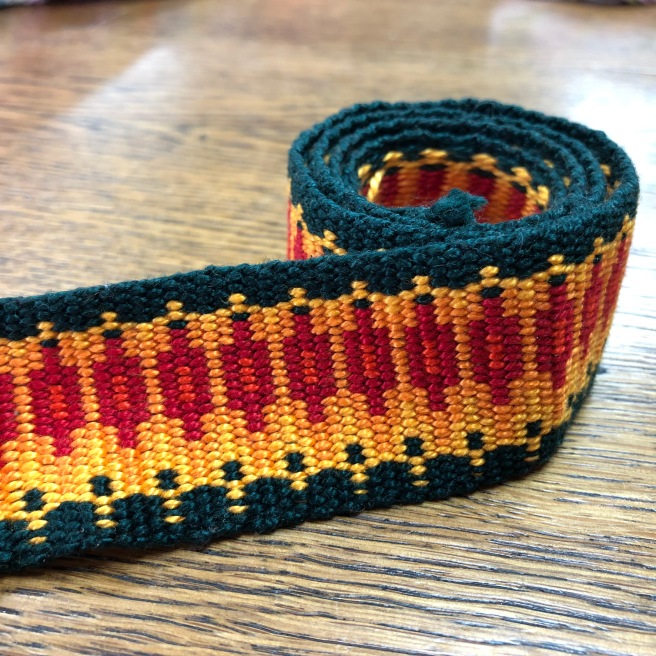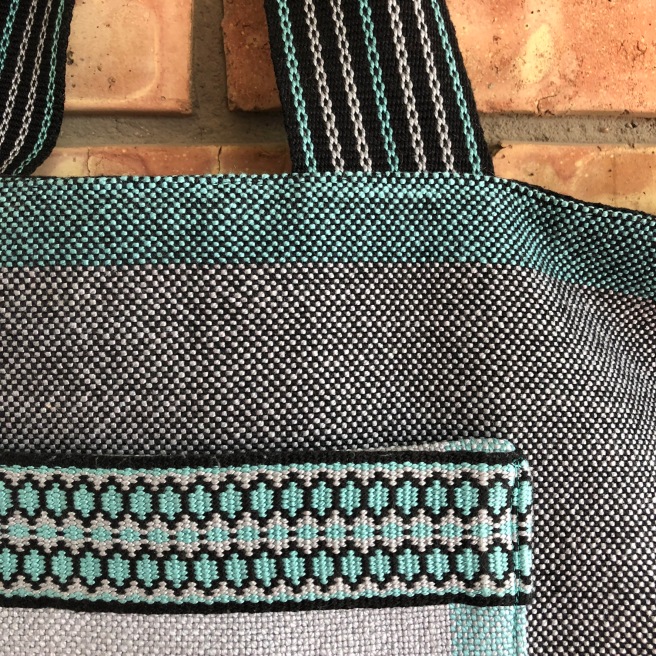
If you aren’t a weaver, it may be better to just enjoy the pretty pictures in this post. If you are a curious person, but not a weaver, some of this will probably stick and make sense. If you are a weaver, I am not providing a pattern, but rather discussing krokbragd and the technical details of these small pieces. I hope you all enjoy.
Krokbragd is a Norwegian term for a style of weaving that translates to “crooked path.” It is traditionally done using a floor loom and as a weft faced weave, rather than as a band woven warp faced. I first began working with krokbragd on the floor loom after seeing it in Norway in many variations. The simple structure relies more on color than structure for it’s interest. In Norway it may be woven as a coverlet, a table topper/runner, or even a cradle blanket backed with fleece. The colors are the colors that come from the land.
Since I truly enjoy weaving on the portable inkle loom used to weave narrow bands, it was only natural that I would try making krokbragd bands. These photos tell my discoveries, including oops and successes. The most challenging part of weaving krokbragd bands is getting the loom warped successfully. It is more tedious than difficult.
The first lesson I learned was that creating a pattern for a band is much different than creating a pattern for the floor loom. The turning of the weave structure changes the way the pattern is made. After a couple times through the design process, I figured it out. Using the correct grid paper is imperative. Next I set “standards” that I always follow. I name the heddles from the closest to me (heddle 1) to the standard inkle heddle (heddle 2) and the farthest heddle (number 3). My weaving rhythm is heddle [1, 2, 3, 2], repeat.
I have learned that wider warps are stickier and must be “broken” a bit at a time rather than making the shed all at once. Narrow warps are easier to get a clear shed. More stories under the photos.








If you are interested in learning to weave in this style, I recommend that you become comfortable using an inkle loom, understand how to manage yarns without tangling and learning how to create a pleasing basic pattern using colors you like. I got started weaving in this style by applying my knowledge of the structure from the floor loom and by using Anne Dixon’s Inkle Pattern Directory as a reference. Krokbragd is a great first step after creating plain weave bands on the inkle as it is loom controlled and you get a very impressive pattern with no hand manipulation once the loom is properly set up.
These are beautiful, Joan, I may have to get out my Inkle loom.
LikeLike
I love your Krokbragd bands and your blog! I’m doing some experiments with diagonal lines in krokbragd. Very interesting to see what is happening.
LikeLike
Thanks Marieke. I look forward to seeing what you weave!
LikeLiked by 1 person
well, you can see it, I also have a blog (but in Dutch): https://bandweefblog.wordpress.com/
LikeLike
Your bands are absolutely beautiful! Lovely, lovely work!
LikeLike
Thank you for sharing your bands, very inspiring.
LikeLike
So inspiring and beautiful! Thank you for sharing. I see you use mostly 3/2 and 5/2 thread. Do you have a preference between the two? How do you decide which one to use?
LikeLiked by 1 person